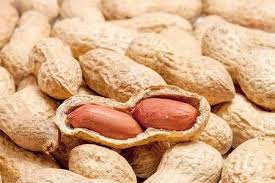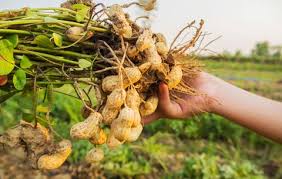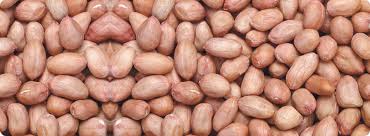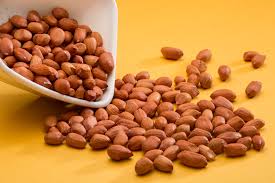
Peanut Nutrition Facts and Health Benefits
The peanut, also known as the groundnut, goober (US), pindar (US) or monkey nut (UK). Peanuts (scientific name Arachis hypogaea) are one of the most popular nuts to eat. Interestingly, however, peanuts are not actually nuts at all. Almonds, cashews, and walnuts grow on trees, while peanuts grow underground in pods. This makes peanuts more closely related to legumes like peas and soybeans than to tree nuts.
If you’ve been wondering whether peanuts are a nutritious snack, the answer is yes. While peanuts should be consumed in moderation, they have a lot of benefits to offer
A serving of peanuts is equal to 1 ounce (28g) or roughly 28 peanuts. The following nutrition information is provided by the USDA for a serving of raw, unsalted peanuts.1
- Calories: 161
- Fat: 14g
- Sodium: 5mg
- Carbohydrates: 4.6g
- Fiber: 2.4g
- Sugars: 1.3g
- Protein: 7.3g
Carbs
An ounce of raw peanuts has just under 5 grams of carbohydrates, translating to a low glycemic index (GI) of 14. A serving of peanuts is less likely to affect your blood sugar than higher-GI foods like white bread (which has a GI of 75) or a bowl of corn flakes (which has a GI of 81). Of the carbs in peanuts, about 2 grams come from dietary fiber and a little over 1 gram is from natural sugars.
Fats
Although 14 grams of fat per serving may seem like a lot, 80% of the fats in peanuts are considered heart-healthy. These include monounsaturated fat and polyunsaturated fat. Raw and dry-roasted peanuts are better for you than oil-roasted, seasoned, or sugar-coated peanuts. Coatings, flavoring, and seasonings can multiply saturated and trans fat content.
Protein

Peanuts offer over 7 grams of protein per ounce, making them a filling and nutritious snack. All 20 amino acids are present in peanuts, with particularly high levels of arginine.
Vitamins and Minerals
Peanuts are nutrient-dense and can help you meet the reference daily intake (RDI) of several vitamins and minerals. An ounce of peanuts provides 25% of niacin, 20% of vitamin E, 21% of copper, and 26% of manganese needs.5
Peanuts also contain some folate, choline, magnesium, zinc, iron, and selenium. Unlike many tree nuts, peanuts don’t offer any vitamin A or C.
Health Benefits

Beyond their nutritional value, peanuts offer certain nutrients that improve metabolism and aid in the prevention of certain diseases.
Aids Blood Sugar Control
Although almonds have a reputation as a health food, it turns out that peanuts produce similar benefits when it comes to blood sugar control. The natural fats in peanuts are effective at reducing the glycemic index of other foods being consumed at the same time.6 Peanuts help control both fasting blood sugars and post-postprandial levels (after a meal).
Supports Weight Loss
There are multiple mechanisms by which peanuts can support weight loss.7 The fiber and protein in peanuts promote feelings of satiety. Although peanuts are high in calories, some of the fat in peanuts is resistant to digestion and not fully absorbed by the body.
Consumption of peanuts also may result in higher resting energy expenditure, increasing overall calorie burn. Including peanuts in a meal plan for weight loss may make it easier to reach your goals.
May Reduce Risk of Heart Disease
According to a 2016 review of studies, resveratrol (an antioxidant present in peanuts) helps reduce cardiovascular inflammation and relax blood vessels, increasing circulation and lowering blood pressure. Furthermore, increased resveratrol concentrations were associated with a decrease in LDL oxidation, the condition of which can lead to atherosclerosis (hardening of the arteries) and coronary artery disease.8
The fiber and healthy fats in peanuts are also beneficial for heart health. Choose unsalted peanuts to avoid the added sodium if you are watching your blood pressure.
May Lower Risk of Gallstones
Peanuts exert beneficial effects on blood cholesterol level which, in turn, can influence the development of gallstones.9 Gallstones are hardened lumps of fluid that develop inside the gallbladder, comprised many of undissolved cholesterol. Consuming peanuts or peanut butter five times per week is associated with a 25% reduction in gallbladder disease.
May Reduce Risk of Alzheimer’s Disease

Peanuts are high in vitamin E and the B vitamin, niacin. In large population studies, niacin from food has been shown to reduce the rate of cognitive decline in adults over age 65.4 Although supplements are not as helpful, high intake of vitamin E through foods like peanuts may reduce Alzheimer’s disease by up to 70%. Peanuts provide a winning combination for brain health.
Allergies
Peanut allergies are one of the most common and potentially dangerous food allergies, affecting at least 1% of the U.S. population and anywhere from 2% to 5% of children (the percentage shifts depending on the definition of the allergy).10 Year after year, peanut allergies continue to climb, particularly among children previously unexposed to peanuts.
Because of this, the FDA has instructed food manufacturers to prominently list peanuts—along with any of the seven other common allergens (milk, eggs, fish, shellfish, tree nuts, wheat, and soybean)—on product labels. Some manufacturers may include wording like “may contain peanuts” if the product is produced in a facility that uses nuts in other food products. This can help you avoid hidden nuts if you are especially allergic.
Peanut allergies can range from mild to life-threatening. In rare instances, it can lead to an all-body reaction known as anaphylaxis, characterized by a severe rash or hives, shortness of breath, wheezing, rapid heart rate, the swelling of the face or throat,10 and a “feeling of impending doom.” If left untreated, anaphylaxis can lead to shock, coma, heart or respiratory failure, and death.
Although many parents are terror-struck by the very notion of a peanut allergy, the American Academy of Allergy, Asthma, and Immunology recommends that peanuts be introduced into a child’s diet early—as early as four to six months—to sensitize them to peanuts and avoid the development of an allergy.11
Adverse Effects
The resveratrol in peanuts can inhibit blood clotting if consumed in excess. This can amplify the side effects of blood thinners like Coumadin (warfarin), causing nosebleeds, easy bruising, abdominal pain, blood in the urine (hematuria), and heavy menstrual bleeding.
Red wine which also contains resveratrol, can further amplify this effect. Tell your doctor about any usual side effects you experience after eating peanuts, peanut butter, or red wine, especially if consumed in excess.
Varieties
There are several varieties of peanuts used to make various products.13 Runner peanuts make up 80% of the peanuts grown in the United States and are typically used to make commercial peanut butter. Virginia peanuts, also known as ballpark peanuts, are the largest and used in gourmet snacks. Spanish peanuts have red skins are popular for use in candy. All-natural peanut butter is usually made with Valencia peanuts, which can also be boiled and eaten as is.
You can find peanuts sold in various forms, including in-shell, shelled, raw, dry-roasted, oil-roasted, or coated. Peanut butter is sold salted or unsalted, chunky or creamy. Some brands of peanut butter contain added sugar or hydrogenated fats for flavor and to keep the spread from separating. Natural peanut butters, which contain only the natural oil found in peanuts, tend to separate; oil rises to the top and needs to be manually mixed in before eating.
Storage and Food Safety
Unshelled and shelled peanuts stored in a cool, dry pantry should last for 1 to 2 months, but their shelf life can be extended to 4 to 6 months if kept in the refrigerator.14 Opened peanut butter lasts 2 to 3 months in the pantry and 6 to 9 months in the fridge.
If buying tinned, sealed peanuts, try to consume them by no later than the “use-by” date (as opposed to the “sell-by” date). If kept beyond the expiration date, peanuts can go rancid and turn bad, even in sealed containers. Once the container is open, keep the peanuts in the refrigerator to maintain their flavor and freshness.
You can tell a peanut is rancid if it either has a slightly fishy, moldy, or sour-milk smell. If the peanuts are shriveled, black, or have evidence of mold, toss them out. If unsure, you can take a bite; a rancid peanut will taste bitter or sour.
Moldy peanuts are especially problematic as they can produce a toxin known as aflatoxin. Eating rancid peanuts can lead to aflatoxin poisoning, a condition that can impair liver function and lead to jaundice, fatigue, loss of appetite, and liver damage. It has even been linked to liver cancer.15
How to Prepare

Peanuts can be eaten as a snack. Some people like steam unshelled peanuts with salted water. Unshelled nuts can be warmed in the oven to enhance their flavor. A handful of peanuts go nicely with an apple or other sliced fruits. Peanuts are also often used in cooking and can be found in stir-fries, curries, and vegetarian wraps as well as for toppings on ice cream and yogurt.
Peanuts are an especially useful food for people with protein deficiency or those trying to gain weight. Add chopped peanuts to desserts, salads, sandwiches, and cereal.
